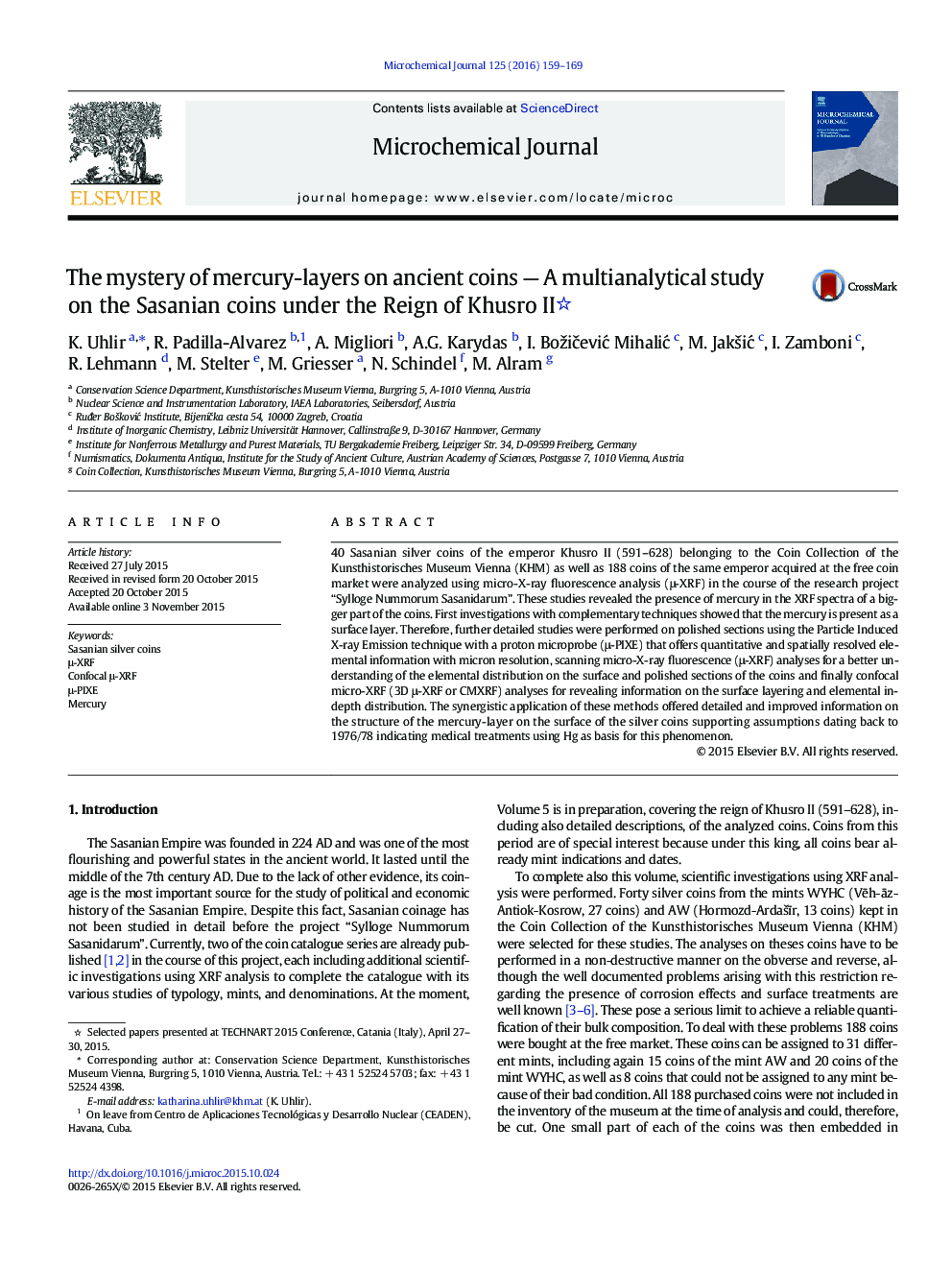| Article ID | Journal | Published Year | Pages | File Type |
|---|---|---|---|---|
| 7641616 | Microchemical Journal | 2016 | 11 Pages |
Abstract
40 Sasanian silver coins of the emperor Khusro II (591-628) belonging to the Coin Collection of the Kunsthistorisches Museum Vienna (KHM) as well as 188 coins of the same emperor acquired at the free coin market were analyzed using micro-X-ray fluorescence analysis (μ-XRF) in the course of the research project “Sylloge Nummorum Sasanidarum”. These studies revealed the presence of mercury in the XRF spectra of a bigger part of the coins. First investigations with complementary techniques showed that the mercury is present as a surface layer. Therefore, further detailed studies were performed on polished sections using the Particle Induced X-ray Emission technique with a proton microprobe (μ-PIXE) that offers quantitative and spatially resolved elemental information with micron resolution, scanning micro-X-ray fluorescence (μ-XRF) analyses for a better understanding of the elemental distribution on the surface and polished sections of the coins and finally confocal micro-XRF (3D μ-XRF or CMXRF) analyses for revealing information on the surface layering and elemental in-depth distribution. The synergistic application of these methods offered detailed and improved information on the structure of the mercury-layer on the surface of the silver coins supporting assumptions dating back to 1976/78 indicating medical treatments using Hg as basis for this phenomenon.
Related Topics
Physical Sciences and Engineering
Chemistry
Analytical Chemistry
Authors
K. Uhlir, R. Padilla-Alvarez, A. Migliori, A.G. Karydas, I. BožiÄeviÄ MihaliÄ, M. JakÅ¡iÄ, I. Zamboni, R. Lehmann, M. Stelter, M. Griesser, N. Schindel, M. Alram,
